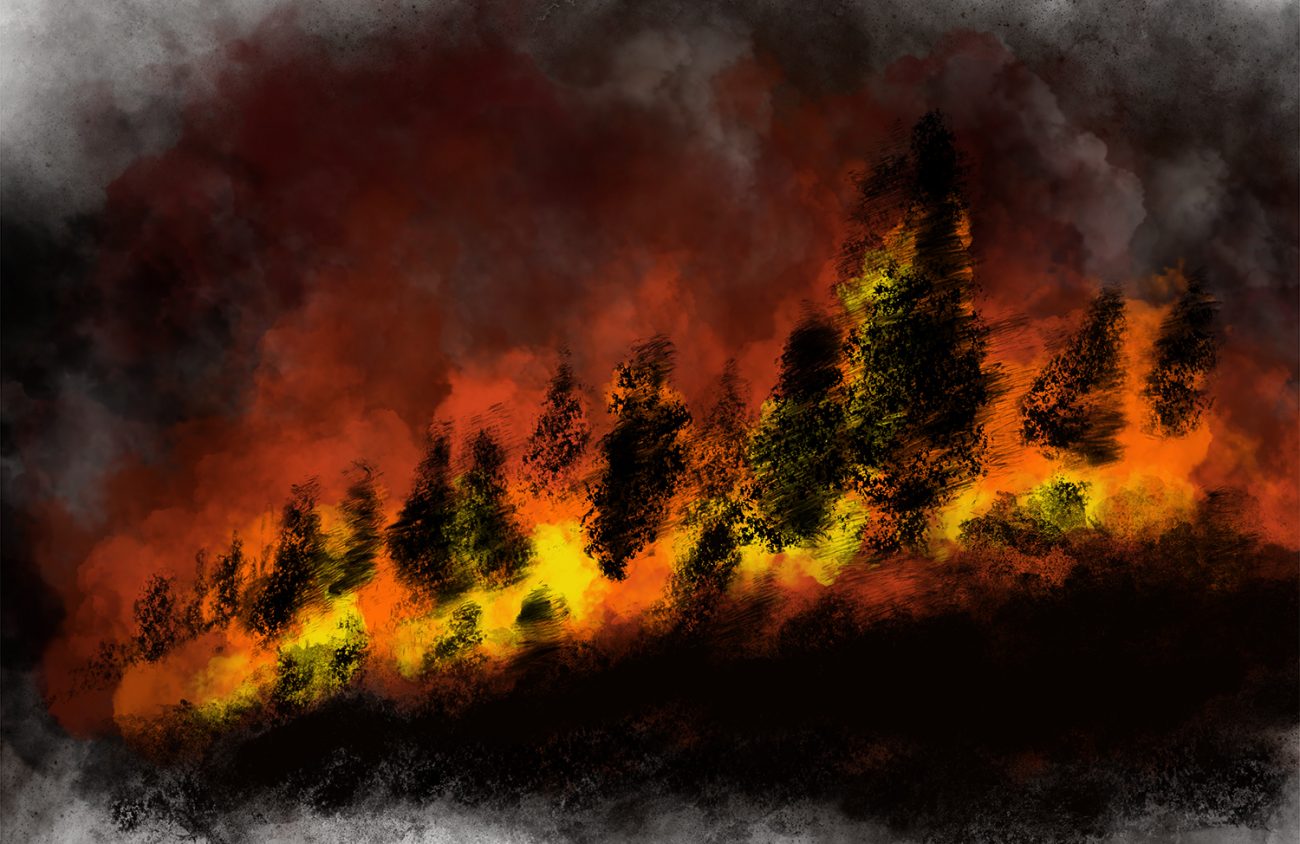The hellish wildfire smoke seen in the southern Willamette Valley last August and September 2017 was, by all counts, the worst summer of smoke this region has ever seen.
Peoples’ lungs were burning. A white-hot bank of smoke choked our every horizon. The smoke broke every record in history in this area. A perfect storm of powerful wildfires surrounded Eugene-Springfield to the south and east. The forests burned and burned and burned — for weeks.
“What made last summer particularly bad is it was many days of high smoke concentration. It was bad and it was bad for a long periods of time. So we had people more impacted,” says Merlyn Hough, director of Lane Regional Air Protection Agency (LRAPA), which monitors air quality for Lane County.
Twenty-eight out of 50 days last summer (July 30 to Sept. 17, 2017) were measured as moderate to very unhealthy levels of smoke in the air, according to LRAPA records.
The sprawling forests of western Oregon are dry earlier than normal this year, heightening the chances of an earlier fire season, according to Jim Gersbach, public information officer with Oregon Department of Forestry in Salem.
“If you were to walk in the forest and get a sense of how dry the trees and dried grasses are now, it’s about what they would be at the end of July and beginning of August,” Gersbach says.
A 36,500-acre wildfire, the Klamathon Fire, has already been tearing apart whole mountainsides on the California-Oregon state line, prompting crews from northern California and Oregon to respond.
“Many of our fire districts are reporting that conditions on the ground are two to three weeks ahead of where you would expect to see them this time of year. … We are already in a position if an ember were to land, there’s a good chance it would start a fire,” Gersbach says.
Multiple fires are already burning across Oregon’s west side: near Hood River in Memaloose State Park, Coos Bay where the Lobster Creek fire is now mostly contained, and another fire outside Medford that started July 5 and burned about 100 acres before firefighters calmed it.
The huge acreage of scorched earth left behind by fires in the Willamette Forest last year may or may not give rise to worse fires this year, Gersbach says.
“It depends entirely on how much of the fuel the fire consumed when it was burning. In some cases, if you have a complete moonscape and the fire reached a high intensity and it burned down all the young trees and brush and it burns the stumps down to charcoal, you might not have much of a fire risk there the next season.”
In other areas, if a fire rushes through quickly at a lower heat, it could leave behind miles of trees that die months later. Those dead, dried trees make easy fuel for next year’s fire season.
The health effects of breathing in wildfire smoke from those trees and the brush can be quite serious.
“With combustion gases, you already have finer particles. Our body does a better job removing dust in outside breathing, but smoke particles are smaller so they get deeper in the lungs. They can get in the eyes and the respiratory system. They can worsen heart and lung disease,” Hough says.
“Anything that puts out a lot of smoke for how much burning is going on — that’s not efficient combustion,” Hough says.
As fires rage through underbrush, dead trees, dead limbs and living trees, a good portion of this physical matter forms the contents of wildfire smoke. Fun fact: Wildfires introduce enormous clouds of invisible gases into the air, such as nitrogen oxide, carbon dioxide, carbon monoxide and a special group of chemicals called PAHs (polycyclic aromatic hydrocarbons).
This is bad news for the ozone layer. It’s also bad news for those with existing respiratory issues such as asthma or COPD (chronic obstructive pulmonary disease). Such gases were blowing over Eugene and Springfield throughout August and September last year, along with the fine particulate matter that one typically associates with wildfire smoke.
LRAPA has four air monitoring stations throughout Eugene and Springfield that detect fine particulate matter and the special gases produced by fires.
Dr. John Mastronarde, a pulmonologist at The Oregon Clinic in Portland, said that with the fire season coming up, people who are sensitive to the smoke should be aware of their surroundings and take proper precautions to limit exposure.
“If you have to go outside and you have a disease like asthma or emphysema, you want to get a proper N-95 mask which you can buy at a hardware store,” he said. “We tell people to stay inside as much as possible, and if they’re really struggling then they may need to get out of town for awhile.”
With reporting by Michael Tobin.
Sponored by

